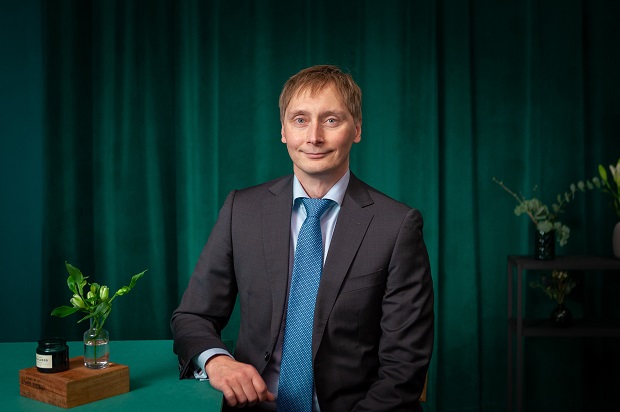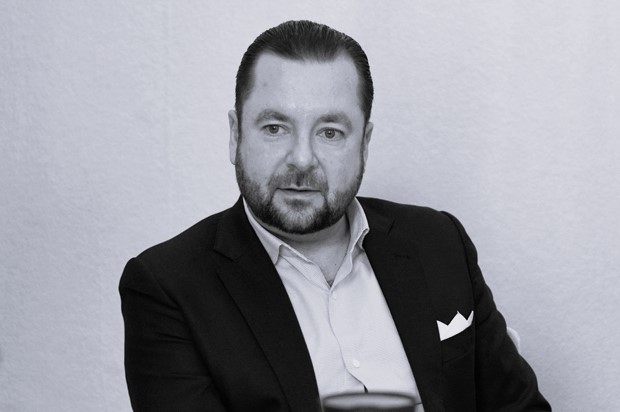
Style consciousness and managing increased ESG expectations
Per Lindgren, head of manager selection at Sweden’s Skandia, talks about past performance analysis, fund sizes and shortcomings of the EU sustainable investment regulation.
Much has changed at Skandia since Per Lindgren was appointed head of manager selection in 2007 and was working as part of a team of two. These days, he is heading up a 14-member strong team working across three different business areas and is also responsible for ESG integration at the Swedish pension and insurance company.
The responsibilities of the team include manager selection for the pension company Skandia Liv’s portfolio as well as fund selection for Skandia Fonder’s platform and the fund offering for bank customers of Skandiabanken. Furthermore, it evaluates Skandia’s internally managed funds. All in all, this represents total assets of around SEK 800 billion (EUR 74 billion). The team is made up of five manager selectors, six ESG analysts, one person working with fund administration and one person working with fund communication.
Per Lindgren notes that Skandia was something of a pioneer in Sweden when it comes to applying the 4Ps of manager selection – people, philosophy, process and performance. The method and multi-manager business model was imported in the early 1990s from Skandia’s subsidiary in the UK, which early on had had a multi-manager offering. When it comes to performance, however, Per Lindgren believes there is still too much focus on past returns across the industry. “Everyone recognises that a fund’s historical return is a very weak indicator of future performance but it’s something I think few really understand. Many selection teams still tend to start screening the universe based on performance, which in practice means searching for those with the highest performance and screening away those with the lowest performance,” he comments.
He notes that there have been a lot of academic studies that have demonstrated that there is no clear link between past performance and future winners as well as similar studies by practitioners coming to the same conclusions. “Instead of looking at how high or low the returns have been, we think it’s much better to question why the returns have been high or low,” he says, adding that past performance really captures the exposure to style factors. He sees identifying the style tilts of a manager as a crucial part of the selection process. He observes that many fund managers are often not aware of their own style biases. “You often meet equity fund managers that claim that they only do bottom-up stockpicking and that the portfolio composition is just a residual,” says Per Lindgren. “But when we look at their holdings, we can see significant style tilts or that they only focus on certain sectors, so it’s obvious for us that they will do well in certain market environments and poorly in others. In general, I would say the consciousness among fund managers has been pretty poor but has increased in recent years as many players like us have started asking questions about style bias.”
Furthermore, there seems to be a link between performance and style consciousness. “When things are going well, fund managers rarely talk about their style bias but emphasise their brilliance and smart stockpicking. But when they perform poorly, they point to their style bias and blame the irrational market that has premiered other types of companies,” he notes.
Asked whether it is a problem for Skandia if a manager lacks in self-awareness of its own style bias or whether it is enough for the selection team to have that knowledge, Per Lindgren responds that it represents a problem. “We want managers to be on top of their risks and if they are not, they generally receive a lower score in our evaluation. Then again, we do have some mandates where the level of consciousness of style biases within the asset class generally is lower,” he says. One such example is Swedish equities, where he notes the style awareness historically has been lower than among international peers, although it has improved.
At Skandia, the selection team starts out by defining the mandate and then identifying what characteristics it believes will be suitable in order to deliver on the mandate. Based on that, the team then starts screening the market, primarily through manager databases and by probing its network. “We use open searches pretty selectively,” says Per Lindgren. “Often, it results in a lot of replies that doesn’t feel particularly relevant or it’s managers that you already identified. So it leads to a lot of extra work and rarely highlights unique managers. But sometimes when we’ve done very specific searches, such as looking for Indian equity managers, which not always have much of a presence in Sweden, open searches have been a good complement.”
When it comes to some of the manager selection insights gained over the years, Per Lindgren highlights the importance of keeping track of how the assets under management of a fund affect the strategy. He notes that a side-effect of good performance tends to be an increase in the fund size, which can create challenges. “Success often leads to an increase in assets under management but a larger fund size can sometimes hamper the management. It can limit the ability to be an active investor and having a larger pool of investors to serve can divert attention away from the investments,” he says. He adds that there are instances where a larger fund size has become a problem for Skandia. Nevertheless, he does not believe there to be an ideal fund size. “Some large funds might have an investment style that can handle a lot of assets under management. They might, for example, have low turnover, a diversified portfolio or primarily focus on large caps. There’s no generic sweet spot but you always need to be aware of how the assets under management affects the investment strategy,” he says.
At the same time, a growing fund is not always a bad thing. “Sometimes it can enable smaller managers to increase their internal resources, for example by hiring more analysts or improve their systems. When a manager has done well, we want them to reinvest in the company. ESG is one such example. Five years ago, we invested in a smaller Swedish fund company that had started with ESG integration but didn’t have any dedicated ESG team. We told them that we expected them to reinvest in the business and build up the ESG resources when they had inflows. And they have now done that,” he says. Like elsewhere, ESG integration and sustainability have been some of the key focus areas at Skandia in recent years. “Our expectation is that all of our all funds and managers integrate ESG and take sustainability into account,” he comments. Over the past years, ESG has also been integrated into all of the different Ps in its selection process.
Asked about the benefits of having the ESG analysts as part of the same team as the manager selectors, he comments: “With the increased expectations on ESG and sustainability, it’s a great advantage to have the ESG team integrated into the manager selection team and those roles are blending together even more.” While the selection staff are responsible for the ESG analysis of managers, he notes that the ESG analysts are specialists in the area and can provide support throughout the process. These days, most asset managers would, however, claim that ESG is fully integrated into all that they do. Asked about his assessment of the actual level of ESG integration within the industry, Per Lindgren notes that the industry has taken a great leap over recent years. “There’s, of course, still a gap between what the asset managers claim they do and what they really do but that gap is continuously shrinking. I see it as a journey that the whole industry is undertaking.
Many like to accuse the fund industry of greenwashing and you can, of course, find such examples. But you should perhaps also be a bit humble as the whole world faces a large transition and an increased understanding of sustainability issues and you don’t gain those insights and competencies over night,” he says, adding that those failing to take ESG seriously risk becoming marginal players.
While he notes that the most important part is what the asset managers actually do when it comes to sustainability, it is difficult to set aside the SFDR categorisation of funds. On the other hand, he points to some of the shortcomings with the regulatory framework, which has led Skandia to go its own way.
“So far, SFDR and the EU taxonomy has created more confusion than transparency. We believe that SFDR will be immature for several years to come. Therefore, we chose to precede the SFDR requirements by communicating a model that we felt was relevant and that we believe will help our customers to understand the sustainability levels of our funds and mutual life portfolio,” he says, referring to its sustainability pyramid. Skandia’s sustainability pyramid is split into investment fulfilling its basic sustainability requirements, sustainable investments contributing to the sustainable development goals (SDGs) and solution investments. “There’s a lot of talk about impact investments but we think many asset managers use the term too generously about their investments. We’re a bit more conservative. Even though we believe that many of the investments we’ve made have a clear impact, we prefer the term ‘solution investments’,” he says.
The investments are scrutinised from two dimensions. Firstly, what the company does and how its products or services are contributing to the SDGs and secondly, how the company is conducting its business. This means that a renewable energy company with weak ESG risk management could score poorly, while a “brown” company that is on top of its ESG risks will score better than it otherwise would have done. According to the sustainability pyramid, 36 per cent of Skandia Liv’s portfolio was classified as sustainable investments contributing to the SDGs, including 12 per cent as solution investments, at the end of 2021. As examples of solution investments, he mentions green bonds or renewable energy – such as a solar park in Senegal providing renewable energy for 1 million Senegalese. For the SFDR disclosures, Skandia is basing the assessment on the two top levels of the pyramid. On the unit-linked fund platform, Skandia has significantly expanded the range of funds with an extra focus on sustainability, which means funds with a combination of exclusions, a best-in-class approach and engagement.
Over the past two years, the amount of sustainable investment-focused funds on the platform has increased from nine to 31, which spans across a broad range of strategies and asset classes. “Many other fund platforms seem to focus on having a lot of actively-managed equity funds with a sustainability focus. Our philosophy has rather been that our customers should be able to find a suitable sustainable fund, no matter the investment preference or need,” he says.
Looking ahead, he believes the introduction of the next level of SFDR in 2023, which will include many new data points, may favour investments in companies that already are green rather than investments in the green transition. “I unfortunately believe this initially will lead to a focus on companies that are best-in-class and a focus away from certain sectors. The SFDR’s principal adverse impact indicators don’t really capture the dynamics of sectors that need to transition,” he says. Furthermore, he adds that investing in companies that are transitioning is much more difficult to communicate than investing in those that already could be considered green. Nevertheless, he believes things are likely to change in a few years’ time.



